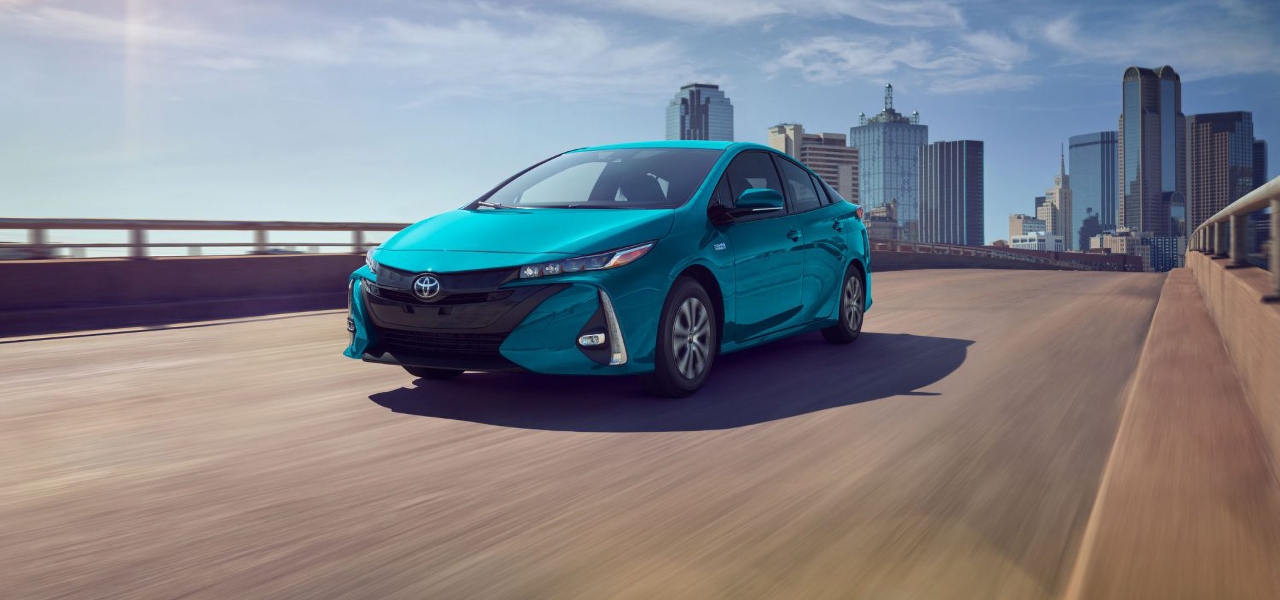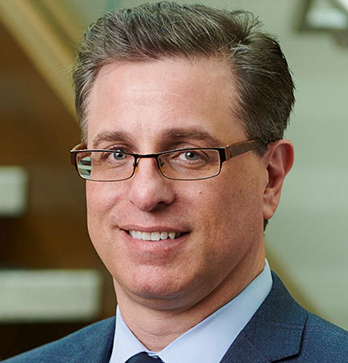 丰田工厂已经为普锐斯(Toyota Prius)等车型实行了电池组报废方案。(丰田)
丰田工厂已经为普锐斯(Toyota Prius)等车型实行了电池组报废方案。(丰田) Adam Muellerweiss 是Clarios的首席可持续发展官,也是负责电池联盟(Battery Coalition)的主席,该联盟由OEM、大型车队厂商、汽车零部件商和其他零售商组成,致力于建立锂电池的闭环回收利用网络。
Adam Muellerweiss 是Clarios的首席可持续发展官,也是负责电池联盟(Battery Coalition)的主席,该联盟由OEM、大型车队厂商、汽车零部件商和其他零售商组成,致力于建立锂电池的闭环回收利用网络。
一个世纪的经验帮助 Clarios 建立了锂的回收利用网络。
去年春天,世界上最大的汽车电池制造商Clarios(柯锐世,原江森自控)在锂离子电池回收奖的竞赛第二阶段中胜出。这个三阶段组成的项目由美国能源部赞助,旨在开发和演示回收利用技术,一旦这些技术的规模扩大,就有可能再回收90%的废旧锂电池,并将其中的关键回收材料重新引入美国供应链。
Clarios获得了能源部奖(总价值550万美元),他们获奖的理念在于开发和应用新技术,该技术可以识别和分离锂离子电池和铅酸电池,确保每种化学物质都有适当且安全的回收方法。在比赛的第三阶段,Clarios的目标是在试验项目中验证其理念。
Muellerweiss与编辑Lindsay Brooke讨论了回收混合动力和电动汽车电池的挑战和机遇。
Lindsay Brooke:Clarios在回收铅酸电池方面有超过100年的经验,回收率高达99%。你们在回收混合动力和电动汽车的电池方面有什么经验吗?
Muellerweiss:是的。我们的经验始于1885年,在戴姆勒和奔驰制造出第一辆摩托车之前。如今,回收先进锂电池的这个过程,就处于当年的同一个阶段。目前,我们的工艺可以分离出大量的材料,但这项技术仍然不够顶尖(达不到“圣杯”级别),不能收集电池级材料,并将其重新转化为同等级别的新电池材料。
铅酸的循环或闭环供应链依赖于人们归还旧电池。我们用于制造新电池的材料中有80%以上是回收的铅和聚丙烯。未来的回收利用技术需要回收所有类型的电池和化学制品。在Clarios,我们专注于确保在整个生命周期内为正确的应用场景提供正确的化学材料。
Lindsay Brooke:从广泛的阳极、阴极以及各种电池类型中分离和回收材料的目标是正确的吗?
Muellerweiss:德国汽车电池制造商Varta(2007年被江森自控收购)在戴姆勒和奔驰制造第一辆摩托车之前,就开始在德国回收铅酸电池了。今天,我们正处于这一过程的第一阶段,就像我们当年一样,我们正在研究如何回收利用更先进的锂电池。目前,我们可以分离出大量材料,但仍然不能够完全将原本电池级的材料重新转化为电池级的材料。
我们从回收铅酸电池的经验中学到了这一点。OEM只会为新车装配指定的原始材料,但后市场的人会问,我们已经有了旧电池,收集它们还很容易,为什么一定要开采原始材料。从那时起,旧电池的材料开始进入后市场的新电池当中。最终,OEM允许使用回收材料。
Lindsay Brooke:数百万辆丰田普锐斯的镍氢电池发挥了多大的作用?
Muellerweiss:混动汽车电池组的价值已经被得到了验证,普锐斯的电池不会放在垃圾场。它们被收集并且重新使用在许多早期的普锐斯出租车当中,或是用于后市场零售。我们能看到许多电池被重新用在汽车上,并且焕发了“第二春”,因为该电池组经过了设计、验证和测试,达到了车规标准,并被证明可以安全使用。因此,虽然关于将电池组用于另一种能源储存形式(可能是固定设施应用)的讨论是一个很有趣的话题,但该电池实际上是为在汽车中使用而设计的。我们看到,最有可能出现的趋势是使用回收的电池延长汽车的寿命,就像使用翻新的变速箱、发动机和其他零部件一样。
Lindsay Brooke:所以,已经开始行动了吗?
Muellerweiss:是的,这就是能源部锂电池竞赛令人激动的地方。他们有非常聪明的人用一些不可思议的方法来发现那些“圣杯”机会。美国阿岗国家实验室的ReCell Center专注于将这些“用过的”材料转化为电池级材料。我们还没有完全做到这一点,但我们知道我们正在进化的路上。一旦你有使用过的旧电池,就需要将他们集中到全国的主要市场上,这就会需要物流运输。在一些情况下,存储这些电池只是为了等待有足够的回收量或只是为了管理物资流通。长远来看,必须有一个基础设施来处理大量的旧电池。目前还达不到这种规模。
Lindsay Brooke:随着电动汽车产量和销量的增加,更多的混动车和电动车将会报废。它们不会被扔在垃圾场,因为这些车的电池组仍有价值,可以回收利用。那么要如何处理这种不断增长的混动和电动汽车电池呢?
Muellerweiss:短期内,以普锐斯为例。它的寿命已经到了尽头,但电池完好无损。这些普锐斯电池不可能报废,因为电池组的价值尚存,已经有公司为后市场翻新普锐斯的电池。它又会装到普锐斯中。这就像一辆发动机完好无损的克尔维特——发动机不太可能被报废销毁。
如果电池组存在故障,就需要安全且可控的处理。汽车制造厂对如何管理、回收这些电池组有非常详细的流程。我们已经看到其中一些电池和一些用于测试的电池已经进入市场。我们不希望看到的是铅酸电池最终会被扔进废品场;它们应该在这个阶段前就被处理,我们会看到一些类似实践,运用到锂电池上。
让我兴奋的是一些改装爱好者、机械师正在改装电动汽车,并将电机装进经典老车。这是一个不断增长的电池再利用市场,尽管它确实包含一些责任问题,但正是这一点在电动汽车的早期衍生了许多创新。
Lindsay Brooke:因此,你是否看到了电池再利用的两条途径?一种是作为充电设施,如储存太阳能和风能。另一种是拆解旧电池,提取锂。是这样吗?
Muellerweiss:这两种途径您都会看到。在我们考虑用作他用,焕发电池“第三次生命”之前,我们还是更倾向翻新电动汽车电池组件,并将其装回汽车内。考虑到车用的电池组,它最初的设计是用在汽车上。这种电池组最终可能在一辆车上使用几十年。随着固定存储技术的迅速发展,相比于那些专门设计用于微电网和其他固定设施使用的电池,这些使用了20年的车用电池组并非一定真的适用于类似的场景。虽然将车用电池用于其他用途不是没有优点,但我们会看得更长远一点。
即使使用我们的锂离子产品,我们也可以选择使用哪种塑料——那么为什么不使用与传统铅酸电池相同的塑料呢?这样可以让我们不做修改,直接将该组件带入回收系统。这可能意味着需要拆分一些别的部件,或与其他一些有技术、有能力的公司合作。我们正在利用网络开发、处理和回收多种化学物质的能力。同时,稀土材料和来自刚果共和国的钴等更“冲突来源”(来自地缘不稳地区)的材料是更有价值的。
A century of experience is helping Clarios build the lithium-reuse network.
Last spring, Clarios, the world’s largest automotive battery maker formerly known as Johnson Controls, emerged a winner in the second phase of the Lithium-Ion Battery Recycling Prize competition. The three-phase program, sponsored by the U.S. Dept. of Energy, aims to develop and demonstrate processes that, when scaled, have the potential to profitably capture 90% of all discarded or spent lithium-based batteries in the U.S., and re-introduce key recycled materials into the U.S. supply chain.
Clarios’ winning concept for the DoE prize (worth a total of $5.5 million) focuses on developing and applying technologies to identify and separate lithium-ion batteries from lead-acid types, ensuring the proper and safe recycling methods for each chemistry. In Phase III of the competition, Clarios aims to validate its concept in pilot programs.
Clarios has over 100 years of experience in recycling lead-acid batteries, at a rate of 99%. Are there learnings you are applying to hybrid and EV batteries?
Yes. Our experience began before Daimler and Benz built their first [1885] motorcycle. Today, we’re at about the same point in the process with recycling advanced lithium batteries as we were back then. Currently our process can separate that wide spectrum of materials, but the technology isn’t yet at the ‘holy grail’ stage − of being able to harvest battery-grade materials and turn them right back into equal-grade materials for new batteries.
The circular or closed-loop supply chain for lead-acid relies on the ability of people to return their used batteries. Over 80 percent of the materials that we use for new batteries are recycled lead and polypropylene. Future recycling demand will require all types of batteries and chemistries. At Clarios we’re really focused on ensuring the right chemistry for the right application across its life cycle.
Separating and reclaiming materials from the wide spectrum of anode and cathode constituents, and from the variety of cell form factors, is the goal, correct?
The German automotive battery maker Varta [purchased by JCI in 2007] first recycled a lead-acid battery in Germany before Daimler and Benz built their first motorcycle. Today, we’re at about the first stage of the process as we look at recycling advanced lithium batteries as we were way back then. Currently we can separate that wide spectrum of materials, but we may not yet be at the ‘holy grail’ of being able to take battery-grade materials and turn them right back into battery-grade materials.
We learned that from our experience with lead acid batteries. The OEs would spec only virgin materials for new-vehicle assembly, but it was the aftermarket people who asked why we had to mine virgin materials when we already had them available in used batteries -- and could collect them easily. That’s when materials from used batteries began entering the aftermarket’s new batteries. Eventually the OEM specs allowed use of recycled materials.
To what degree are the nickel metal-hydride batteries used in millions of Toyota Priuses in play?
Hybrids’ battery pack value is proven. Prius batteries don’t sit in junk yards. They’re being collected and rebuilt for taxicab use in many of the early Priuses out there, and for aftermarket service batteries. We’re seeing a lot of second life in the battery’s original application because that pack was designed, validated, and tested to automotive grade, and proven to be safe in use. So, while the discussions about using that pack for another energy-storage source, perhaps a stationary application, might be an interesting topic, that battery was really designed for use in a vehicle. What we’re seeing is the most likely trend to emerge is batteries being used to extend the life of the vehicle, in the same industry experience as remanufactured transmissions, engines and other components.
So, the ball is rolling?
Yes, that’s where the DoE Lithium competition is so exciting. They have very smart people with some incredible tools looking at those ‘holy grail’ opportunities. Argonne National Laboratory’s ReCell Center is focused on taking those ‘used’ materials and turning them into battery-grade materials. We’re not quite there yet but we know we’re on the evolutionary path. And once you have used batteries in hand, you need to aggregate them across major markets, across the country. That requires transporting them, in some cases storing them to wait for available capacity or just to manage material flow. There has to be an underlying infrastructure, long term, to handle a large magnitude of batteries. Currently the scale that’s required isn’t there.
As EV production and sales volumes increase, there will be hybrids and EVs crashed and reaching their end of life. They won’t likely end up in junk yards because they’ve got a valuable battery pack in them to be harvested. How will this steadily increasing stream of hybrid and EV batteries be handled?
In the short term take a Prius, for example. It’s reached the end of its life and has an intact battery. It’s likely that today, those Prius batteries won’t even make it to the scrapper because the pack has a known value and there are companies remanufacturing Prius batteries for aftermarket service. It goes right back into a Prius. It’s like a wrecked Corvette with an intact engine – the engine isn’t likely to go into a shredder.
And if a battery pack is not intact, it needs to be safely and manageably handled. The automakers have very specific procedures for how to manage and recover those packs. We’re already seeing some of those batteries, and some batteries used in testing, come in. One thing we hate to see is lead-acid batteries end up in scrap yards; they should have been removed before that stage. We’ll see some similar practices with lithium types.
What excites me is the gearheads, the mechanics, who are retrofitting EVs and upgrading classic cars with electric engines. There’s a growing market for battery reuse there, although it does contain some questions of liability. But it’s what has spurred a lot of innovation in the early days of EVs.
So, you see two pathways for battery reuse? One would be in the charging infrastructure, for grid buffering of solar and wind, for example. The other would be to disassemble used cells to mine them for their lithium content. Correct?
You’ll see all of the above. There are opportunities to remanufacture EV packs and return them to use in vehicles before what we would consider a ‘third life’ in a different application. But if you look at that pack, it’s original design intent was use as original equipment in a vehicle. That very pack might ultimately serve for a couple of decades in a vehicle. Stationary storage technology is evolving quickly as well. With the right cell chemistry across the life cycle, that pack after 20 years of use may have been surpassed by alternative chemistries that were designed for micro grids and other stationary applications. There is some merit in using vehicle batteries for other purposes, but we see that further out.
Even with our lithium-ion products, we make choices in what plastics to use – so why not use the same ones from our conventional lead-acid products? It allows us to take that component directly into our recycling system without modification. It might mean more separation is needed in some of the other components, and partner with other companies that have technologies and capacity to do it. We’re using that network to develop capabilities to handle and recover multiple chemistries. The rare-earth materials and the more ‘conflicted-source’ materials such as cobalt coming from the Republic of Congo that are valuable.
等级
打分
- 2分
- 4分
- 6分
- 8分
- 10分
平均分
